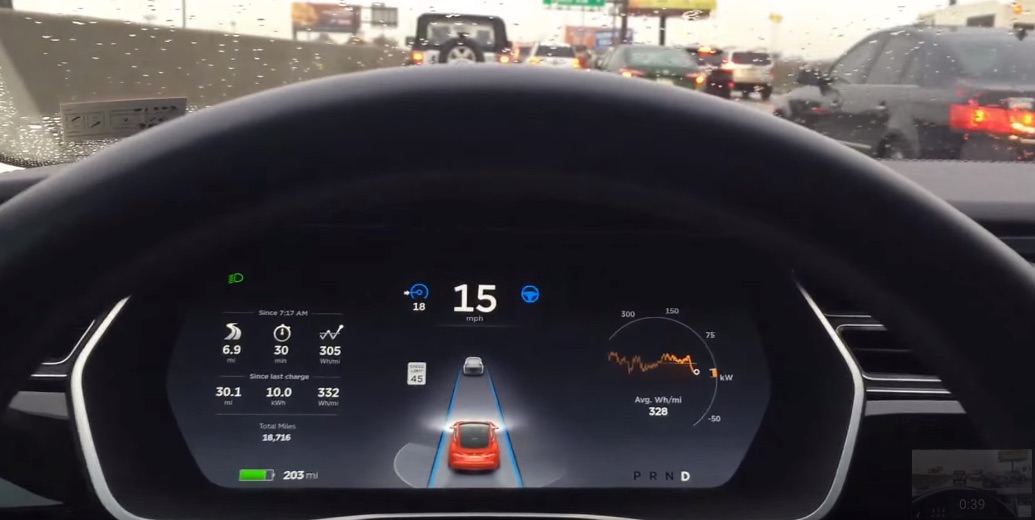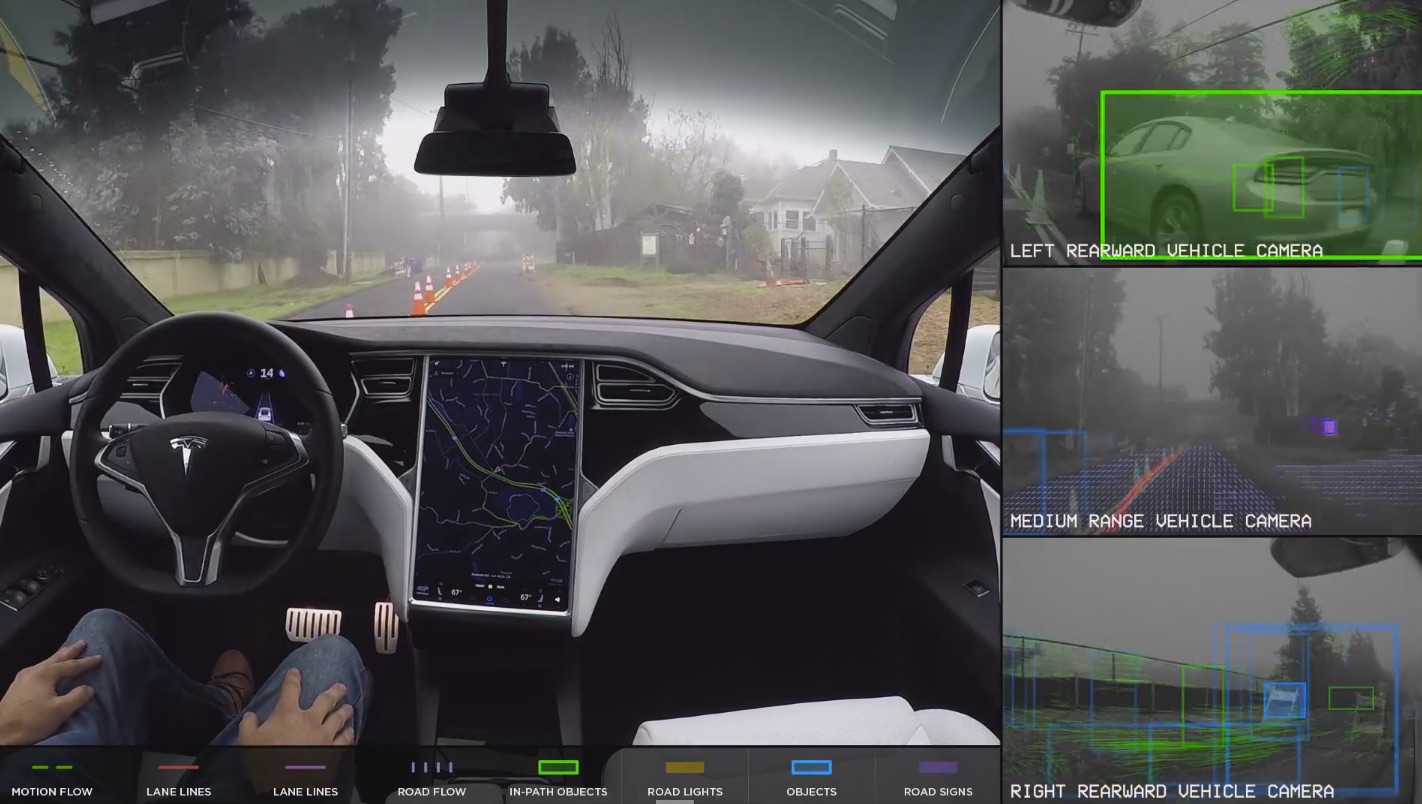

News
Tesla Autopilot and artificial intelligence: The unfair advantage
Serial tech entrepreneur and Tesla CEO Elon Musk has had a longstanding fear of artificial intelligence, but his company’s investments in artificial intelligence have been noted as an attempt to keep track of developments in the field of AI. In an interview for Vanity Fair in April 2017, he outright expressed his concerns with AI and claimed that one of the reasons for the development of SpaceX was that it could be an interplanetary escape route for humanity if artificial intelligence goes rogue. However, even Musk realizes the importance of AI in real-world applications, specifically for self-driving cars. At the end of June, Musk hired Andrej Karpathy as the new Director of Artificial Intelligence at Tesla, and MIT Technology Review claims it is the start of a plan to rethink automated driving at Tesla.
Karpathy comes from OpenAI, a non-profit company founded by Musk that focuses on “discovering and enacting the path to safe artificial general intelligence.” Afterwards, he moved on to intern at DeepMind, a place that spotlighted reinforcement learning with AI. Karpathy’s previous research focuses are on image understanding and recognition, which directly translates into applying proven image recognitions algorithms in Tesla’s Autopilot.
Recently, the popular question of morality was brought up in context to AI learning in Autopilot cars. It’s very interesting to consider how to teach technology to respond to an innately human moral problem. The Moral Machine, hosted by Massachusetts Institute of Technology, is a platform built to “gather human perspectives on moral decisions made by machine intelligence, such as self-driving cars.” It questions how the machine would act in human decisions such as whether to crash the driver or keep driving into a pedestrian that is crossing the street where there are no traffic regulators. How exactly do you teach a logical machine the mechanisms of ethical decision-making?
Although Musk and Tesla are the leaders in the self-driving field, a number of other companies are also entering into the competition sphere. Google, Uber, and Intel’s Mobileye have all been considering the application of reinforcement learning in the context of self-driving cars. Uber, Waymo, GM (Cruise Automation), Mobileye (camera supplier), Mercedes and Velodyne (LiDAR Supplier) could be potential competitors in the realm of self-driving vehicles. However, most of the technology does not encompass full self-driving, which is Musk’s aim. While other companies are investing heavily in autonomous fleets, Tesla far outpaces them in terms of data collection and release of finished product.
What are the differentiators for Tesla in the growing field of AI directed driverless cars?
Historically, Musk has focused on “narrow AI” which can enable the car to make decisions without driver interference. The vehicles would increasingly rely on radar as well as ultrasonic technology for sensing and data-gathering to form the basis for Tesla’s Autopilot algorithms. A technology that isn’t derived from LiDAR, the combination of radar and camera system said to outperform LiDAR especially in adverse weather conditions such as fog.
With the introduction of Autopilot 2.0 and Tesla’s “Vision” system, and billions of miles real-world driving data collected by Model S and Model X drivers, Tesla continues to create a detailed 3D map of the world that has increasingly finer resolution as more vehicles are purchased, delivered and placed onto roadways. The addition of GPS allows Tesla to put together a visual driving map for AI vehicles to follow, paving the path for newer and more advanced vehicles.
The addition of Karpathy will be a notable asset for Tesla’s Autopilot team. In specific, the team will be able to apply Karpathy’s deep knowledge of reinforcement learning systems. Reinforcement learning for AI is similar to teaching animals via repetition of a behavior until a positive outcome is yielded. This type of machine learning will allow Tesla Autopilot to navigate complex and challenging scenarios. For example, AI will allow cars to determine in real-time how to navigate a four-way stop, a busy intersection or other difficult situations present on city streets. By making cars smarter with the way they navigate drivers, Tesla will put itself ahead of the curve with a fully-thinking, fully self-driving car.
Tesla is expected to demonstrate a fully autonomous cross-country drive from California to New York by the end of this year as a showcase for its upcoming Full Self-driving Capability. If you’re buying a Tesla Model 3, or an existing Model S or Model X owner, just know that you’re contributing to a self-driving future, mile by mile.

Elon Musk
Elon Musk’s X will start using a Tesla-like software update strategy
The initiative seems designed to accelerate updates to the social media platform, while maintaining maximum transparency.

Elon Musk’s social media platform X will adopt a Tesla-esque approach to software updates for its algorithm.
The initiative seems designed to accelerate updates to the social media platform, while maintaining maximum transparency.
X’s updates to its updates
As per Musk in a post on X, the social media company will be making a new algorithm to determine what organic and advertising posts are recommended to users. These updates would then be repeated every four weeks.
“We will make the new 𝕏 algorithm, including all code used to determine what organic and advertising posts are recommended to users, open source in 7 days. This will be repeated every 4 weeks, with comprehensive developer notes, to help you understand what changed,” Musk wrote in his post.
The initiative somewhat mirrors Tesla’s over-the-air update model, where vehicle software is regularly refined and pushed to users with detailed release notes. This should allow users to better understand the details of X’s every update and foster a healthy feedback loop for the social media platform.
xAI and X
X, formerly Twitter, has been acquired by Elon Musk’s artificial intelligence startup, xAI last year. Since then, xAI has seen a rapid rise in valuation. Following the company’s the company’s upsized $20 billion Series E funding round, estimates now suggest that xAI is worth tens about $230 to $235 billion. That’s several times larger than Tesla when Elon Musk received his controversial 2018 CEO Performance Award.
As per xAI, the Series E funding round attracted a diverse group of investors, including Valor Equity Partners, Stepstone Group, Fidelity Management & Research Company, Qatar Investment Authority, MGX, and Baron Capital Group, among others. Strategic partners NVIDIA and Cisco Investments also continued support for building the world’s largest GPU clusters.
News
Tesla FSD Supervised wins MotorTrend’s Best Driver Assistance Award
The decision marks a notable reversal for the publication from prior years, with judges citing major real-world improvements that pushed Tesla’s latest FSD software ahead of every competing ADAS system.

Tesla’s Full Self-Driving (Supervised) system has been named the best driver-assistance technology on the market, earning top honors at the 2026 MotorTrend Best Tech Awards.
The decision marks a notable reversal for the publication from prior years, with judges citing major real-world improvements that pushed Tesla’s latest FSD software ahead of every competing ADAS system. And it wasn’t even close.
MotorTrend reverses course
MotorTrend awarded Tesla FSD (Supervised) its 2026 Best Tech Driver Assistance title after extensive testing of the latest v14 software. The publication acknowledged that it had previously criticized earlier versions of FSD for erratic behavior and near-miss incidents, ultimately favoring rivals such as GM’s Super Cruise in earlier evaluations.
According to MotorTrend, the newest iteration of FSD resolved many of those shortcomings. Testers said v14 showed far smoother behavior in complex urban scenarios, including unprotected left turns, traffic circles, emergency vehicles, and dense city streets. While the system still requires constant driver supervision, judges concluded that no other advanced driver-assistance system currently matches its breadth of capability.
Unlike rival systems that rely on combinations of cameras, radar, lidar, and mapped highways, Tesla’s FSD operates using a camera-only approach and is capable of driving on city streets, rural roads, and freeways. MotorTrend stated that pure utility, the ability to handle nearly all road types, ultimately separated FSD from competitors like Ford BlueCruise, GM Super Cruise, and BMW’s Highway Assistant.
High cost and high capability
MotorTrend also addressed FSD’s pricing, which remains significantly higher than rival systems. Tesla currently charges $8,000 for a one-time purchase or $99 per month for a subscription, compared with far lower upfront and subscription costs from other automakers. The publication noted that the premium is justified given FSD’s unmatched scope and continuous software evolution.
Safety remained a central focus of the evaluation. While testers reported collision-free operation over thousands of miles, they noted ongoing concerns around FSD’s configurable driving modes, including options that allow aggressive driving and speeds beyond posted limits. MotorTrend emphasized that, like all Level 2 systems, FSD still depends on a fully attentive human driver at all times.
Despite those caveats, the publication concluded that Tesla’s rapid software progress fundamentally reshaped the competitive landscape. For drivers seeking the most capable hands-on driver-assistance system available today, MotorTrend concluded Tesla FSD (Supervised) now stands alone at the top.
News
Elon Musk’s Grokipedia surges to 5.6M articles, almost 79% of English Wikipedia
The explosive growth marks a major milestone for the AI-powered online encyclopedia, which was launched by Elon Musk’s xAI just months ago.

Elon Musk’s Grokipedia has grown to an impressive 5,615,201 articles as of today, closing in on 79% of the English Wikipedia’s current total of 7,119,376 articles.
The explosive growth marks a major milestone for the AI-powered online encyclopedia, which was launched by Elon Musk’s xAI just months ago. Needless to say, it would only be a matter of time before Grokipedia exceeds English Wikipedia in sheer volume.
Grokipedia’s rapid growth
xAI’s vision for Grokipedia emphasizes neutrality, while Grok’s reasoning capabilities allow for fast drafting and fact-checking. When Elon Musk announced the initiative in late September 2025, he noted that Grokipedia would be an improvement to Wikipedia because it would be designed to avoid bias.
At the time, Musk noted that Grokipedia “is a necessary step towards the xAI goal of understanding the Universe.”
Grokipedia was launched in late October, and while xAI was careful to list it only as Version 0.1 at the time, the online encyclopedia immediately earned praise. Wikipedia co-founder Larry Sanger highlighted the project’s innovative approach, noting how it leverages AI to fill knowledge gaps and enable rapid updates. Netizens also observed how Grokipedia tends to present articles in a more objective manner compared to Wikipedia, which is edited by humans.
Elon Musk’s ambitious plans
With 5,615,201 total articles, Grokipedia has now grown to almost 79% of English Wikipedia’s article base. This is incredibly quick, though Grokipedia remains text-only for now. xAI, for its part, has now updated the online encyclopedia’s iteration to v0.2.
Elon Musk has shared bold ideas for Grokipedia, including sending a record of the entire knowledge base to space as part of xAI’s mission to preserve and expand human understanding. At some point, Musk stated that Grokipedia will be renamed to Encyclopedia Galactica, and it will be sent to the cosmos.
“When Grokipedia is good enough (long way to go), we will change the name to Encyclopedia Galactica. It will be an open source distillation of all knowledge, including audio, images and video. Join xAI to help build the sci-fi version of the Library of Alexandria!” Musk wrote, adding in a later post that “Copies will be etched in stone and sent to the Moon, Mars and beyond. This time, it will not be lost.”










